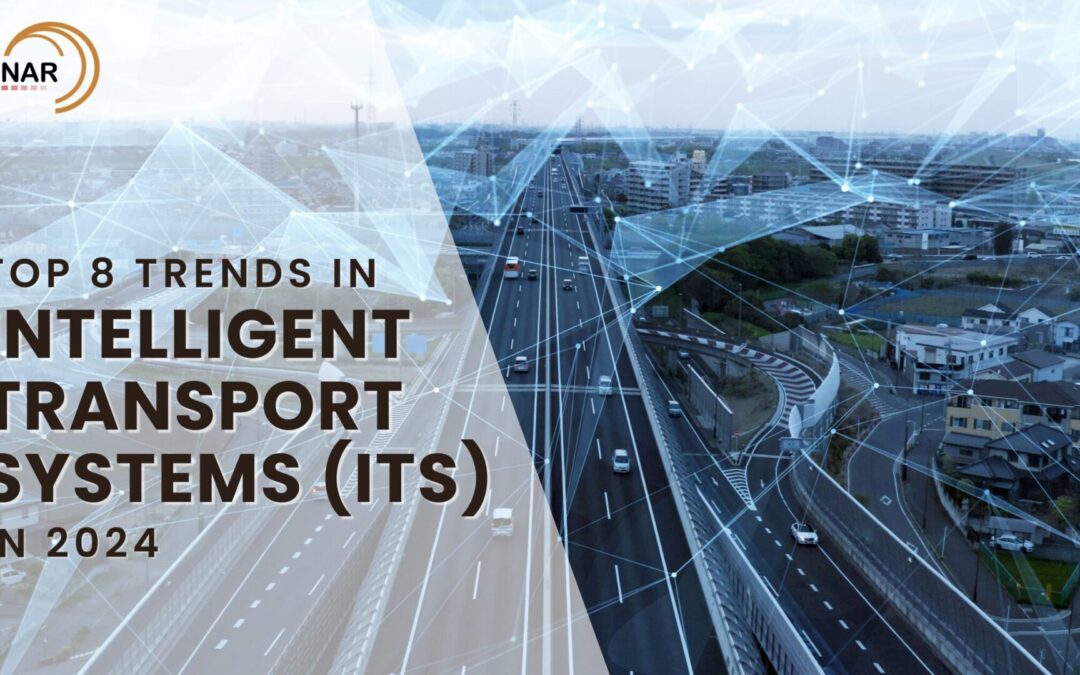Intelligent Transport Systems (ITS) are at the forefront of transforming our transportation landscape, ushering in an era of smart transport solutions. By easily integrating advanced technologies, ITS optimizes the intricate play between people, infrastructure, and vehicles, resulting in a transportation network that is more responsive to our growing needs. As urbanization increases and environmental concerns intensify, the role of ITS becomes increasingly important in addressing these challenges.
This blog explores the dynamic trends in intelligent transport systems, examining the latest trends that are reshaping urban planning and smart transport solutions. We will explore how these smart transport solutions are redefining the future of mobility and contributing to the creation of sustainable and resilient cities. Join us as we uncover the innovations driving the ITS revolution and their profound impact on our transportation ecosystem.
Explore Innovations Driving the ITS Revolution in Transportation
1. Integration of 5G Technology
The introduction of 5G technology is changing smart transport solutions for better. Thanks to 5G’s superior speed, near-zero lags time, and outstanding connection abilities, vehicles, structures, and traffic control systems are communicating in real-time. Such connections are vital for advanced ITS apps like self-driving cars, immediate traffic updates, and intelligent parking. 5G’s application is setting the foundations for trustworthy and swift smart transport answers, increasing overall transport network efficiency and safety. This is one of the best trends in intelligent transport systems in 2024.
2. Advancements in Autonomous Vehicles
Self-driving vehicles are always growing thanks to the help of AI and new sensor tech. As of 2024, we’re seeing quick setup of driverless buses, delivery robots, and even cars! These machines use Level 4 and Level 5 automation. The heart of these vehicles? It’s a fancy ITS tech! It uses real-time data, GPS, and V2X talk (from vehicle to literally anything else) to drive safely and quick as a whip. If we mix these with smart transportation, we could see less traffic, safer roads, and fun commutes which will help in avoiding the road accidents and hazard to people and public property.
3. Improved Traffic Management Systems
Smart transport solutions such as traffic tools are growing in recent times, using AI and learning patterns to study instant traffic info as well as better traffic movement. These tools can fix traffic lights, manage roadblocks, and change traffic paths based on live conditions, lessening traffic jams and cutting down travel time. Using sensors from IoT and connected structures adds to these tools’ talents, giving important info for looking ahead and making choices. This move is key for smarter, speedier city transport networks.
4. Development of Smart Infrastructure
Smart infrastructure growth is a major thing in ITS. It’s all about bringing high-tech stuff into roads, bridges, and tunnels. Things like IoT sensors, smart lights, and clever traffic signs that talk to cars and control systems. It’s not just about making things safe and efficient. It’s also about making sure that self-driving and connected cars can fit in seamlessly. A lot of cities and local governments are spending money on these tech upgrades. They’re aiming for tougher, more adaptable transport networks. That’ll make the whole infrastructure work better and last longer for us as well as for the future generation.
5. Expansion of Mobility as a Service
The way we use transportation is changing because of something called Mobility as a Service, or MaaS for short. Think of MaaS like a digital tool which puts everything from buses, trains, car sharing, renting bicycles or cars all at one platform. It makes getting around easy, as well as you don’t need to use private cars as much. By 2024, more places are using MaaS setting trends in intelligent transport systems. It makes travel smoother using up-to-the-minute data as well as artificial intelligence (AI), along with machine learning.
6. Cybersecurity and Data Privacy
Cybersecurity is a big deal for smart cities. As technology takes over smart transport solutions with things like self-driving cars and smart traffic lights, it’s important to keep them safe from hackers. Protecting secret information is key to keeping people happy and safe. Cities need to be extra careful with computers, using strong passwords and checking for problems often. This is a big part of building safe and smart transportation solutions and systems which will contribute in the development of the society and the country.
7. Artificial Intelligence and Machine Learning
AI is changing transport services with predictive analysis, traffic efficiency, and finding unusual occurrences. Machine learning can comb through tons of data, spotting patterns and trends in intelligent transport systems, letting us make smart transport solutions choice. For example, AI can get traffic lights timed perfectly, foresee accidents, and enhance bus and train services.
8. Focus on Sustainability and Environmental Impact
Transportation is a major contributor to greenhouse gas emissions and air pollution. Trends in Intelligent Transport Systems (ITS) offer a promising smart transport solution by promoting sustainable mobility. By optimizing traffic flow, encouraging public transport use, and facilitating the adoption of electric and alternative fuel vehicles, ITS helps reduce carbon footprint and improve air quality. Furthermore, ITS-enabled smart cities can develop transportation solutions that prioritize environmental sustainability and create healthier living spaces for residents.
Conclusion
The future of transportation is here, and it’s looking bright. With rapid advancements in technology like 5G, artificial intelligence, and the Internet of Things, we’re seeing a revolution in how we move around. From self-driving cars to smarter cities and connected travel services, smart transport solutions are transforming our lives. These innovations are not just about convenience; they’re also about creating a more sustainable and equitable world. By prioritizing environmental impact and accessibility, we can build transportation systems that truly benefit everyone. Companies like Sonar Technologies are at the forefront of this exciting journey, developing innovative solutions to meet the demands of a changing world. As we continue to embrace these trends in intelligent transport systems, we can look forward to a future of seamless, efficient, and eco-friendly mobility.

